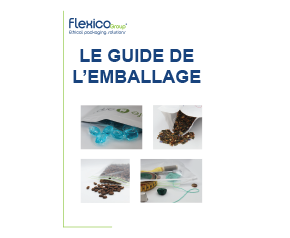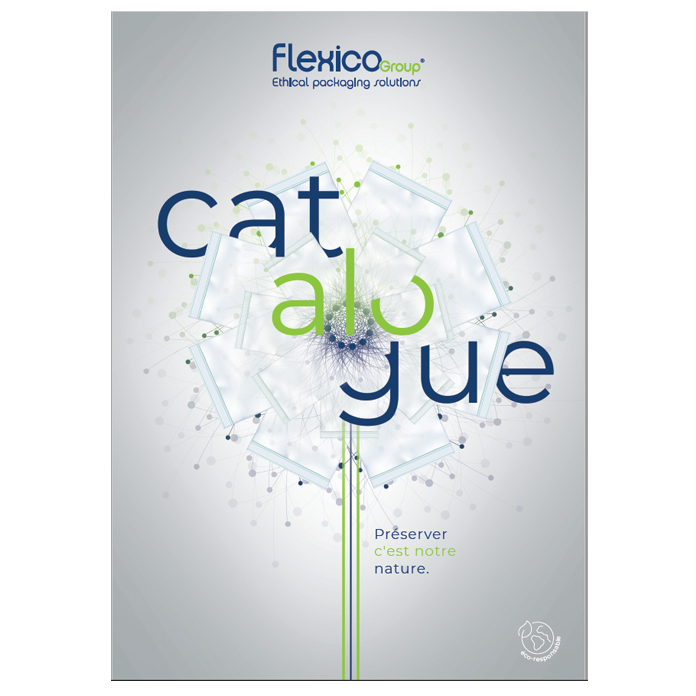Glossary Packaging
The packaging vocabulary
Discover all the words associated with packaging to help you choose your packaging.
A
The anti-UV film prevents the alteration of the condition of a product. Its effective action against UV rays guarantees a barrier against premature aging of the product, its discoloration or oxidation. However, anti-UV films can weaken, yellow or opacify the packaging plastic.
Recommended for the quality of its protection, the antistatic film is particularly reliable for the preservation of electronic, textile or medical products. Equipped with an antistatic additive, it combines both insulation and conductivity.
B
Each work must be studied in order to be valorized by its packaging. Thus, to such product correspond such or such type of bags. It is essential to offer a suitable alternative for each product, in terms of aesthetics and practicality. Today, products are usually packaged in a flat or stand-up pouch.
There are two key steps in the manufacture of the patch seal pouch. The first step is to extrude the film that will be used to make the bag. Then, the closure system – chosen by the customer – is added to the film. Thus, the patch closure bag is a custom-made bag: the customer himself decides on the film and the closure to be assembled.
By acting against the harmful impacts of the industrial-commercial environment (gas, water vapor, or UV rays), barrier properties ensure that a product’s shelf life and saleability are extended.
The bindery makes it easier to place the product inside the bag thanks to the presence of an offset opening. By suspending it during the packaging process, the bindery process performs a pre-cutting on it. This element is particularly useful so that the bag can be detached more easily from the head of the bundle once the packaging is completed.
Staggered-edge” bags are manufactured using the Wicket bindery system. By “staggered edges” we mean that the bag has a back side that is longer than the front side, where there are usually two small holes to facilitate the layout of the shelves in the store. The opening of the bag is fully accessible from the bundle, allowing the bag to be filled before the unbundling operation.
In the so-called “Thürling”, the bindery by plastic pad consists in putting edge to edge the two faces of a prefabricated bag. A single hole is made in the top of the bag, which optimizes the shelf life. The bags, which are bindery by a plastic pad, are generally arranged vertically on the horizontal displays of the stores. Thus, this system allows a better arrangement of the space and a fair distribution of the bags.
By combining environmental friendliness and cost savings, biocompostable products are a real asset for manufacturers. In an industrial environment where the temperature is between 70° and 80° and has 70% humidity and 20% oxygen, biocompostable products will decompose in just a few weeks. However, make no mistake: compostable is not the same as recyclable.
Biodegradable products decompose naturally if the environment is favorable. In other words, if the temperature, humidity and oxygen concentration allow it, the decomposition of a product is possible. Thus, the environmental impact is reduced while maintaining optimal packaging quality.
C
It is by combining several materials that the creation of complex films is made possible. This complexing process, also known as laminating, makes it possible to create a film that has the characteristics of both plastic and aluminum, but also of paper.
Aesthetic, ergonomic and easily adaptable to any size of work, the drawstring bag is ideal for products with frequent use. The practicality of its opening allows for quick and easy access to the product. It is generally available in several colors and can enhance any type of product.
E
Companies that operate via an eco-design system seek to reduce the environmental impacts generated by the manufacture of a product. Thus, they take into account the different stages of the process (design; production; consumption; end of life) and ensure that each bag no longer represents an ecological hazard.
F
Also called “bagging”, the filling of bags can be manual, semi-automatic or automatic and is carried out by machines called “bagging machines”. Each filling method is determined according to the product to be bagged, the volume to be packed, the bag used and, finally, the desired filling rate.
H
With a visible “hook” on the upper part of the plastic, the hook pouch optimizes the product’s display on the shelf and its presentation to consumers. If the adhesive hook (flexible or rigid) is “added” to the bag, the rigid hook is directly “integrated” into the whole.
In order to optimize the sale and storage in the store, several types of hooks and hangers are offered. Among them, rod holes and hooks are suitable options for shelving. Each system is suitable for different types of products and offers an optimal arrangement of the storage of the goods.
M
The flagship product of the Flexico® bag range, Minigrip® protects the product from moisture and dust while preserving its nutritional, technological, chemical and other qualities.
O
Several processes can lead to the elaboration of an opaque film. Among them, the most known remain the incorporation of a dye in the worked mass, the impression of the surface or the metallization. The use of an opaque film is generally linked to a desire to protect the product from the harmful effects caused by light. However, it can also be chosen to preserve the confidentiality of the product or its lack of aestheticism.
P
PCR (Post Consumer Recycled) film is a film made from recycled post consumer plastic. It is a monomaterial PE film, it is recycled and recyclable.
Polyethylene (PE) is the most used plastic in Europe, well ahead of polypropylene. Derived from petroleum, PE could eventually be replaced by its more ecological version: BIO-PE.
As the second most used plastic among standard plastics, polypropylene (PP) is a polymer commonly used in the manufacture of packaging products.
By reaffirming the product’s brand through a visual printed on the surface of the plastic, the printed bag is the best way to leave a mark on the consumer’s mind. While there are several printing methods, each has its own advantages and disadvantages. It is therefore important to find the printing method that best suits the chosen product.
R
Made from polyethylene, polypropylene and laminated films, Flexico® reclosable bags can be opaque, UV resistant or anti-static. Several customization options are also available, including soft-touch finishing.
The reusable bag is not a recycled bag but a reused bag. In other words, once its initial function is completed, the bag is used for another function. No processing is required and the bag is kept out of the waste stream.
With its functional and practical opening and closing method, the reclosable zip optimizes product protection. It keeps it away from external contamination and actively fights against humidity. The product is therefore protected from any element that could impair its quality.
At present, only single-material plastic films are – potentially – recyclable. However, this depends on whether or not there is a recycling channel at the end of the process. On the other hand, complex films are not (or hardly) recyclable, as well as bags with inks or glues that are delicately inseparable from the main material.
Fully connected to each other, the bags are only separated once the filling is done. These bags have the particularity of being customizable and can be made to measure, thus being able to adapt to various types of products.
S
Composed of a main film reel, secondary reels and other component dispensers, the shaping machine is a tool that allows the production of simple or complex prefabricated bags. Its role is to carry out several steps in the processing of plastic film, such as folding, cutting and shaping. It should be noted that these steps are previously defined and follow precise instructions for each type of bag.
Only one type of polymer is needed to create single-material films. In this way, each film can be quickly designed and just as quickly recycled. The great advantage of single-material film is that it is less expensive to produce than complex film.
Airtight and ecological, the slider bag adapts to all modes of consumption and conditions of use. The slider facilitates the opening and closing of the pouch, giving a quick and easy access to the packaged product.
In order to optimize the sale and storage in the store, several types of hooks and hangers are offered. Among them, rod holes and hooks are suitable options for shelving. Each system is suitable for different types of products and offers an optimal arrangement of the storage of the goods.
Thanks to its “velvet” or “satin” finish, soft-touch film is pleasant to look at and to touch. This sensory experience influences the consumer’s perception of this material as a guarantee of quality.
Generally designed with a reinforced hanging hole, this bag is ideal for in-store product display. Its adhesive closure system makes it particularly easy to open and close, allowing easy access to the product contained.
W
Weldings are an essential step in the bag making process. Whether they are wire, wide or seam seals, they allow the bag to be made by assembling the different plastic films. Each method has specific properties and is chosen according to the type of product to be packaged.
Z
Fully customizable, the zipped bag meets (almost) all requirements and adapts to a large number of products. Its appearance may differ according to its mode of production and regulation, but it always remains a faithful ally of hermeticity and protection.




